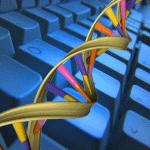Bioinformatics
|
29 july 2014 15:17:53 |
| The BiSciCol Triplifier: bringing biodiversity data to the Semantic Web (BMC Bioinformatics) |
|
Tweet Background:
Recent years have brought great progress in efforts to digitize the world`s biodiversity data, but integrating data from many different providers, and across research domains, remains challenging. Semantic Web technologies have been widely recognized by biodiversity scientists for their potential to help solve this problem, yet these technologies have so far seen little use for biodiversity data. Such slow uptake has been due, in part, to the relative complexity of Semantic Web technologies along with a lack of domain-specific software tools to help non-experts publish their data to the Semantic Web.
Results:
The BiSciCol Triplifier is new software that greatly simplifies the process of converting biodiversity data in standard, tabular formats, such as Darwin Core-Archives, into Semantic Web-ready Resource Description Framework (RDF) representations. The Triplifier uses a vocabulary based on the popular Darwin Core standard, includes both Web-based and command-line interfaces, and is fully open-source software.
Conclusions:
Unlike most other RDF conversion tools, the Triplifier does not require detailed familiarity with core Semantic Web technologies, and it is tailored to a widely popular biodiversity data format and vocabulary standard. As a result, the Triplifier can often fully automate the conversion of biodiversity data to RDF, thereby making the Semantic Web much more accessible to biodiversity scientists who might otherwise have relatively little knowledge of Semantic Web technologies. Easy availability of biodiversity data as RDF will allow researchers to combine data from disparate sources and analyze them with powerful linked data querying tools. However, before software like the Triplifier, and Semantic Web technologies in general, can reach their full potential for biodiversity science, the biodiversity informatics community must address several critical challenges, such as the widespread failure to use robust, globally unique identifiers for biodiversity data. |
| 62 viewsCategory: Bioinformatics |
 A continuous optimization approach for inferring parameters in mathematical models of regulatory networks (BMC Bioinformatics) A continuous optimization approach for inferring parameters in mathematical models of regulatory networks (BMC Bioinformatics)A Wavelet Approach to Detect Enriched Regions and Explore Epigenomic Landscapes (Journal of Computational Biology) 
|
| blog comments powered by Disqus |
MyJournals.org
The latest issues of all your favorite science journals on one page
The latest issues of all your favorite science journals on one page



